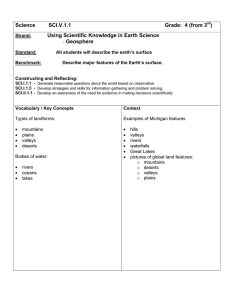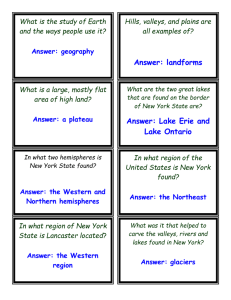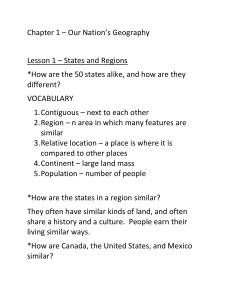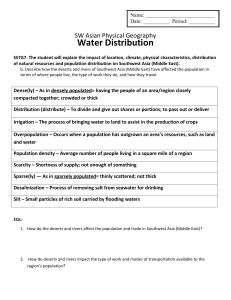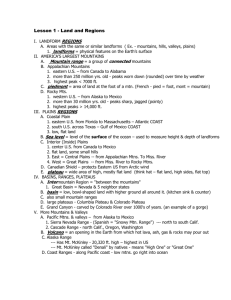Science SCI.V.1.1
advertisement
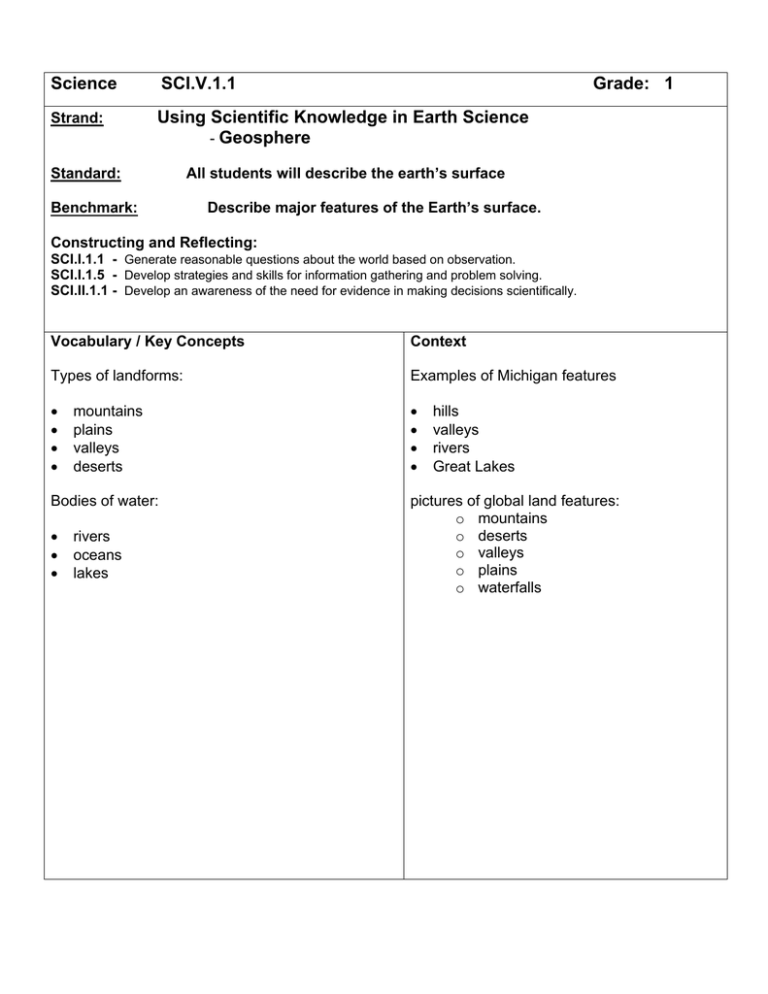
Science SCI.V.1.1 Strand: Using Scientific Knowledge in Earth Science - Geosphere Standard: Benchmark: Grade: 1 All students will describe the earth’s surface Describe major features of the Earth’s surface. Constructing and Reflecting: SCI.I.1.1 - Generate reasonable questions about the world based on observation. SCI.I.1.5 - Develop strategies and skills for information gathering and problem solving. SCI.II.1.1 - Develop an awareness of the need for evidence in making decisions scientifically. Vocabulary / Key Concepts Context Types of landforms: Examples of Michigan features • • • • • • • • mountains plains valleys deserts Bodies of water: • • • rivers oceans lakes hills valleys rivers Great Lakes pictures of global land features: o mountains o deserts o valleys o plains o waterfalls Knowledge and Skills Resources The earth’s surface is made up of various features. Coloma Resources: Students will describe the earth’s surface in different locations, distinguishing such features as mountains, plains, valleys, deserts, hills, oceans, rivers, waterfalls and lakes. Sarett Nature Center www.sarett.com “All About the Earth” Photo Book Set. Other Resources: Physical features (link) http://walrus.wr.usgs.gov/docs/ask-a-ge.html Earth’s features (link) http://encarta,msn.com Cole, Joanna. The Magic School Bus: Inside the Earth. Scholastic, 1989. Stille, Darlene. Deserts. True Books Ecosystem Series. Children’s Press, 1999. Videoconferences Available For more information, see www.remc11.k12.mi.us/dl or call Janine Lim 471-7725x101 or email jlim@remc11.k12.mi.us 5.1.1 Ice Age from Cranbrook Institute of Science Instruction Benchmark Question: What is the earth’s surface like? Focus Question: How could you describe the major features of the earth’s surface? The teacher will share the books about land features with students. The teacher will discuss with the class the land and water features students have seen in person. Assessment None Teacher Notes: Describe the earth's surface. Elementary students are likely unaware of the size, shape and variety of surfaces of the earth beyond their neighborhoods, but soon learn that all the geosphere is made of similar material. They learn that under the pavement and the ground floors are soil, rock, and water. The students begin to realize that the surface of the earth is extremely uneven, but the difference between mountains, hills, rocks, pebbles, and soil is only size not composition. They learn that mountains are formed and worn down into the other features. Through various media and field trips, students observe that beyond their sidewalks, fields and neighborhood buildings, there are mountains and valleys, hills and plains, lakes and ponds, rivers and creeks, deserts and rainforests. Through the study of maps, an understanding develops that the earth is round and that the features of the earth are diverse.
